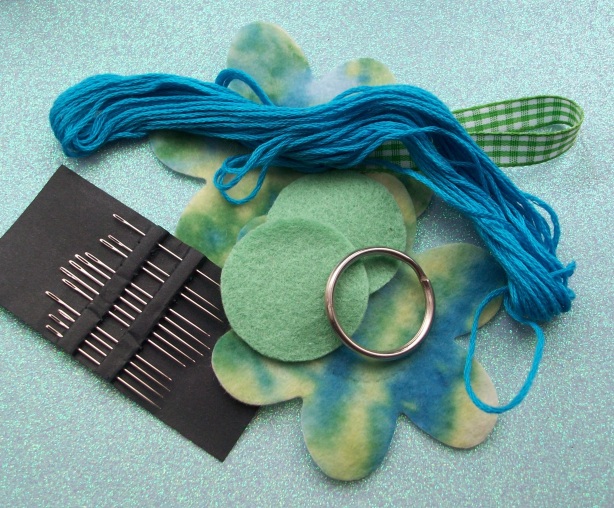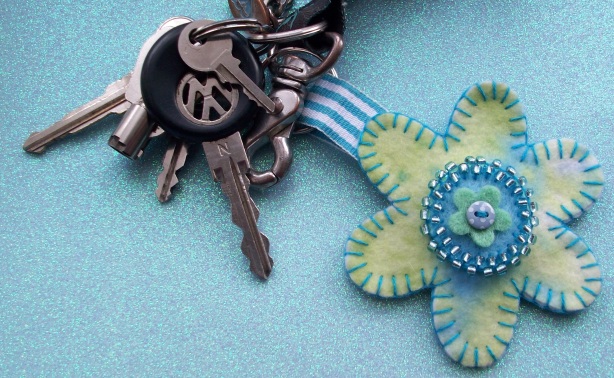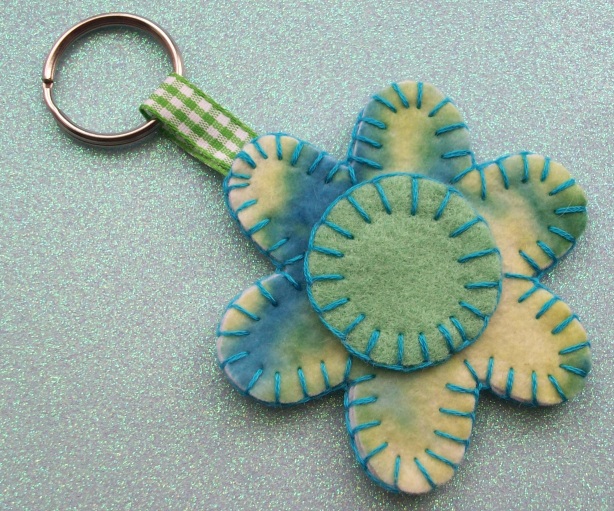It’s Star Wars Day! It’s also the start of another month and a new theme of ‘Sewing’.
Just a fairly quick blog post this week I’m afraid……… With a quick idea for a keyring/bag charm with a nice floral theme ……..
So, armed with a few bits and pieces and my trusty Sizzix machine, here’s how to make that quick keyring/bag charm……

You’ll need something sharp to cut the thread with too – a light sabre might be a suitable weapon of choice today 😉
You will need:
Pieces of wool felt in two contrasting colours to make a couple of diecut flowers and centre circles – I’ve used the standard Sizzix ‘Large Daisies’ and ‘Circles’ dies to make mine;
Embroidery silk – two strands used together seems to work best for me but I’ve used three for clarity in the photographs;
A sewing needle;
Coordinating ribbon;
Keyring finding.
Firstly, start by sewing your centre circle in to place – I prefer to use a blanket stitch for this but you could try experimenting with either running stitches, back stitches, chain or whip stitching. It’s kind of up to you and your personal preference or level of sewing expertise really. Whatever you decide upon, you’ll need to repeat it once more for the second flower too.
Here’s a quick link to an easy tutorial on YouTube if you’re unsure about blanket stitch – a quick search will reveal similar tutorials for the other methods I’ve mentioned too: http://www.youtube.com/watch?v=eXkSE2TTF4s
Next, take a short length of ribbon – about 15 cms is fine. Thread through the base of you keyring finding, fold in half and secure with a few stitches.

Make a couple of quick stitches to secure the ribbon…… before sandwiching in between the two flower pieces.
Place your ribbon in between the two, back to back, flower pieces and sew together using your desired method of stitching. Top Tip: If you find that your embroidery floss starts to tangle or knot, rub your thumb and forefinger up and down either side of your nose a few times and then slide them down the thread once or twice – it’s an old wives trick that’s guaranteed to work wonders but possibly not advisable if you’re wearing copious amounts of make-up!
Finish by making a little knot and then ‘burying’ the end of your thread in between the layers of felt.
Voila! A finished item that’s been hand sewn by your very good self; How easy was that?
May the 4th be with you in your crafty sewing adventures this week and be careful with those light sabres! 😉



























